The Bee Lab
Links
- Document: Report (8.05 MB pdf) , HTML , XML
- Download citation as: RIS | Dublin Core
The U.S. Geological Survey (USGS) Bee Lab is a collaborative interagency joint venture and international leader for bee (Hymenoptera: Apoidea) identification, survey design, quantification of bee and plant interrelations, and development and maintenance of occurrence databases. Each of these objectives supports native bee conservation by providing critical data and tools for the United States and other countries. The Bee Lab is part of the USGS Eastern Ecological Science Center (EESC) and located in Laurel, Maryland, at the U.S. Fish and Wildlife Service (USFWS) Patuxent Research Refuge. The laboratory houses scientists from the EESC, USGS’s Cooperative Fish and Wildlife Research Units, and the USFWS to develop identification tools and survey design support for State, Federal, Tribal, and nongovernment organization partners. In addition to the development of identification tools, important objectives include developing keys for native and nonnative bee species and making those tools accessible to partners and the public. Among the most visible and reused products produced during the development of the tools are the detailed photographs of the bees themselves. Accurate bee identification allows for better monitoring of bee species and examination of environmental factors that may influence their populations.
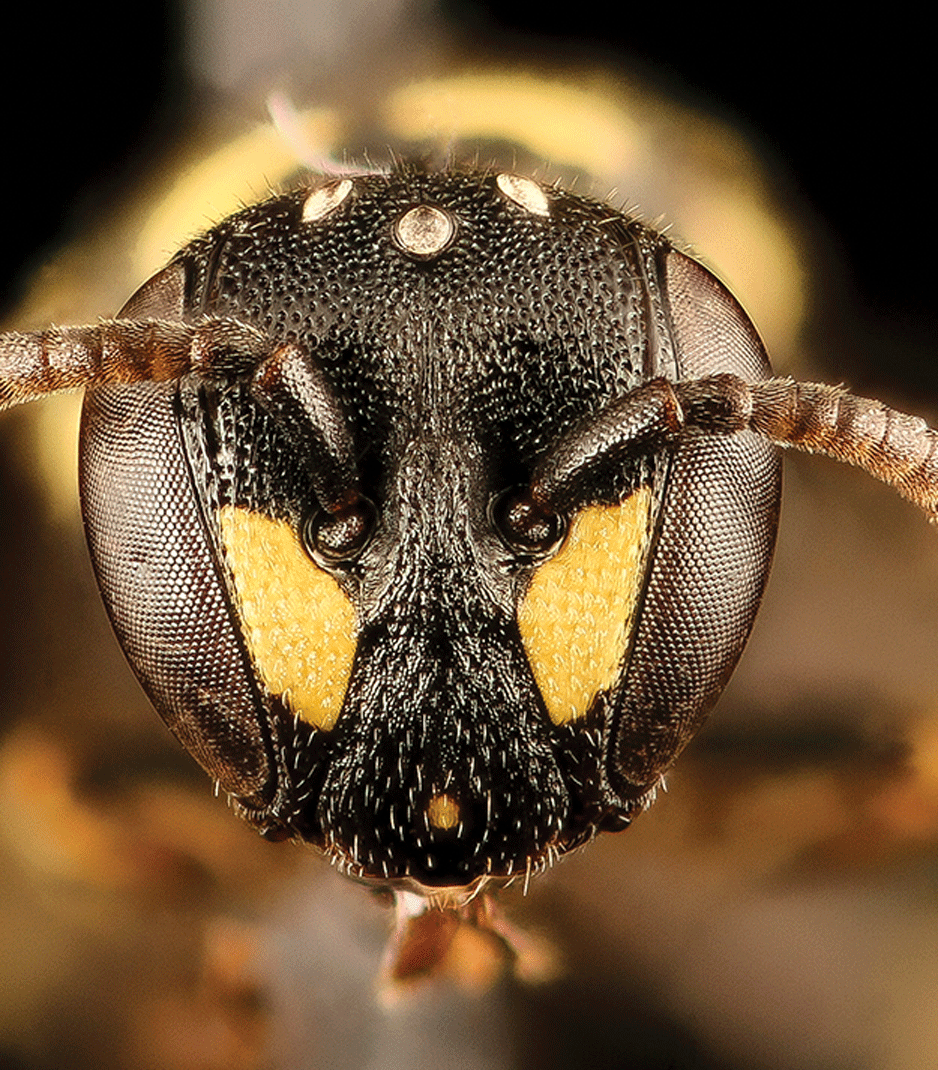
Hylaeus pictipes, Crawford County, Pennsylvania (nonnative to the United States).
Bee Collection, Monitoring, and Survey Design
-
There are more than 4,000 bee species in the United States and many different methods to count and study them. Bee Lab scientists have been instrumental in development of bee collection techniques and assess capture effectiveness and potential collection bias. Collection methods range from visual surveys to large malaise traps.
-
The Bee Lab scientists assist partners with the design of bee surveys for different monitoring objectives and tailor the design based on location, species life history traits, and local habitat conditions. Some of these surveys have been carried out using citizen scientists as the collectors and data providers.
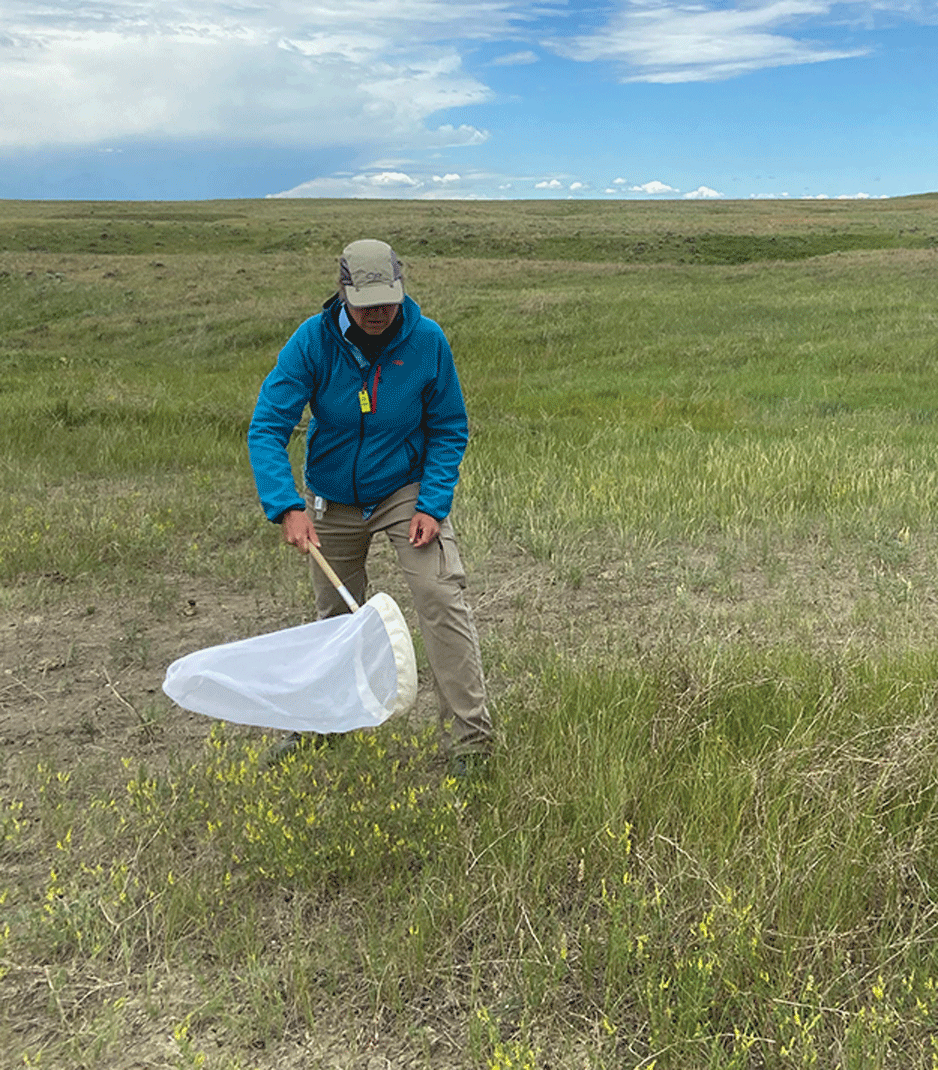
A U.S. Geological Survey scientist uses a net to collect bees for an occupancy survey.
Bee Processing, Identification, and Photography
-
After bees are collected, they must be washed, dried, and prepared for identification. Data are then entered into the Bee Lab database.
-
More than 700,000 specimens (individual bees) have been processed at the laboratory using an efficient workflow. Bee Lab scientists train bee researchers in processing, identification, and curation of specimens, along with database management.
-
Macro photographs are taken of specimens to highlight key characters used to identify bees.
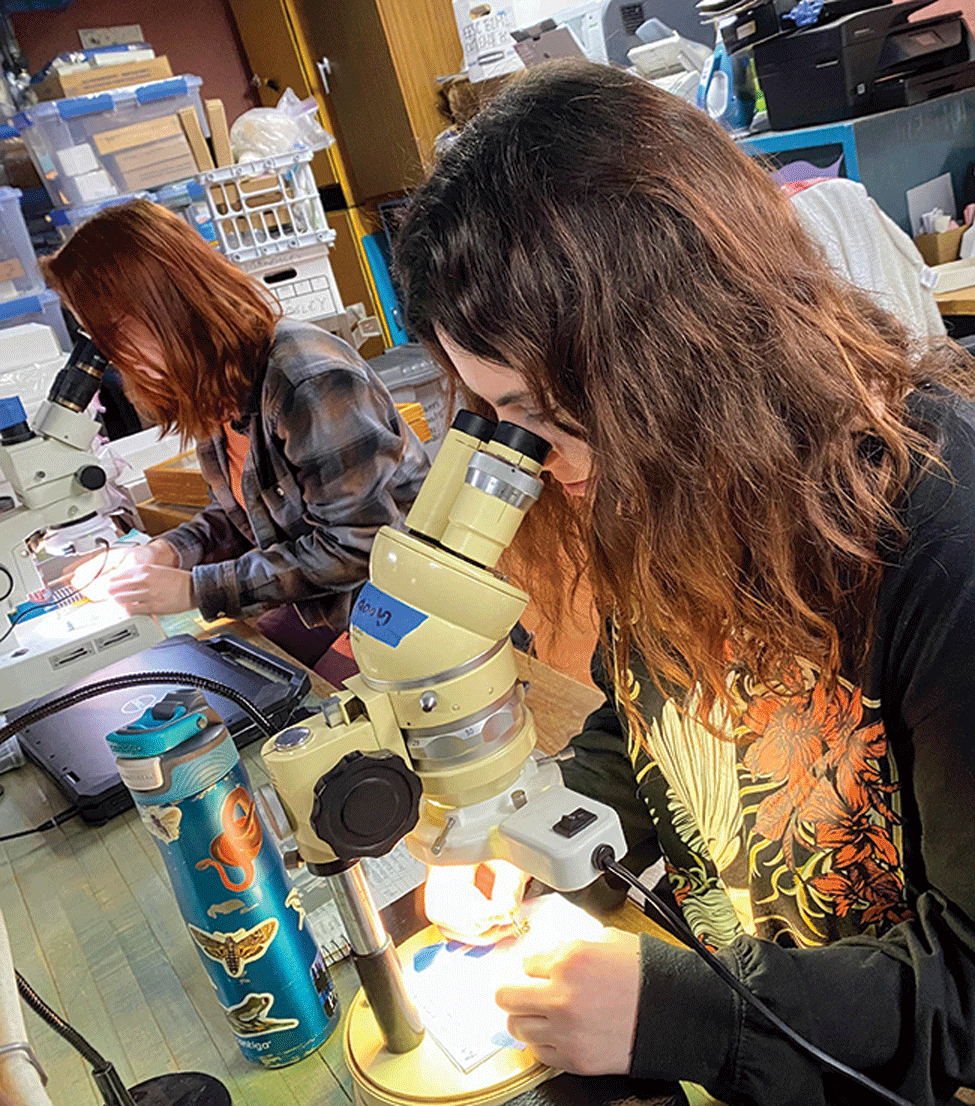
U.S. Fish and Wildlife Service (USFWS) biologists learning to identify bees using microscopes at the Bee Lab. Photograph by Clare Maffei, USFWS.
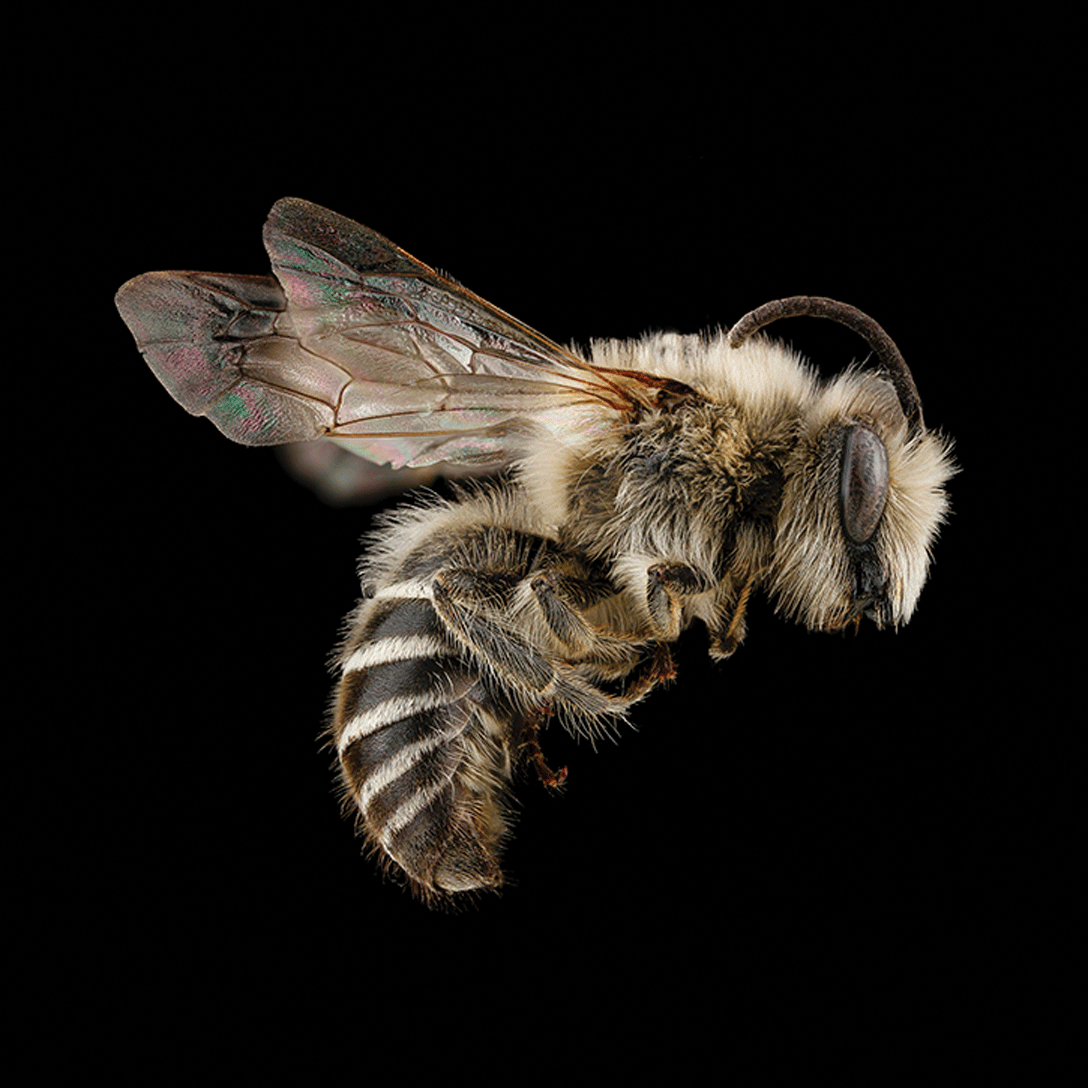
Colletes validus illustrating a key identification characteristic. The distance from the bottom of the compound eye to the mandible base (called the malar space) is significantly longer than most bee species within the Colletes family, at least in the northern United States.
Working Bees
Native bees pollinate many cultivated plants, including sunflowers, cherries, blueberries and cranberries, and were here long before honey bees were brought to the country by European settlers. In addition to many cultivated plants, native bees are estimated to pollinate 75 percent of flowering plants around the world (Committee on the Status of Pollinators in North America, 2007). By foraging on pollen, native bees conduct an ecosystem service that is annually valued at more than 3 trillion dollars worldwide. And very few native bees sting—really!
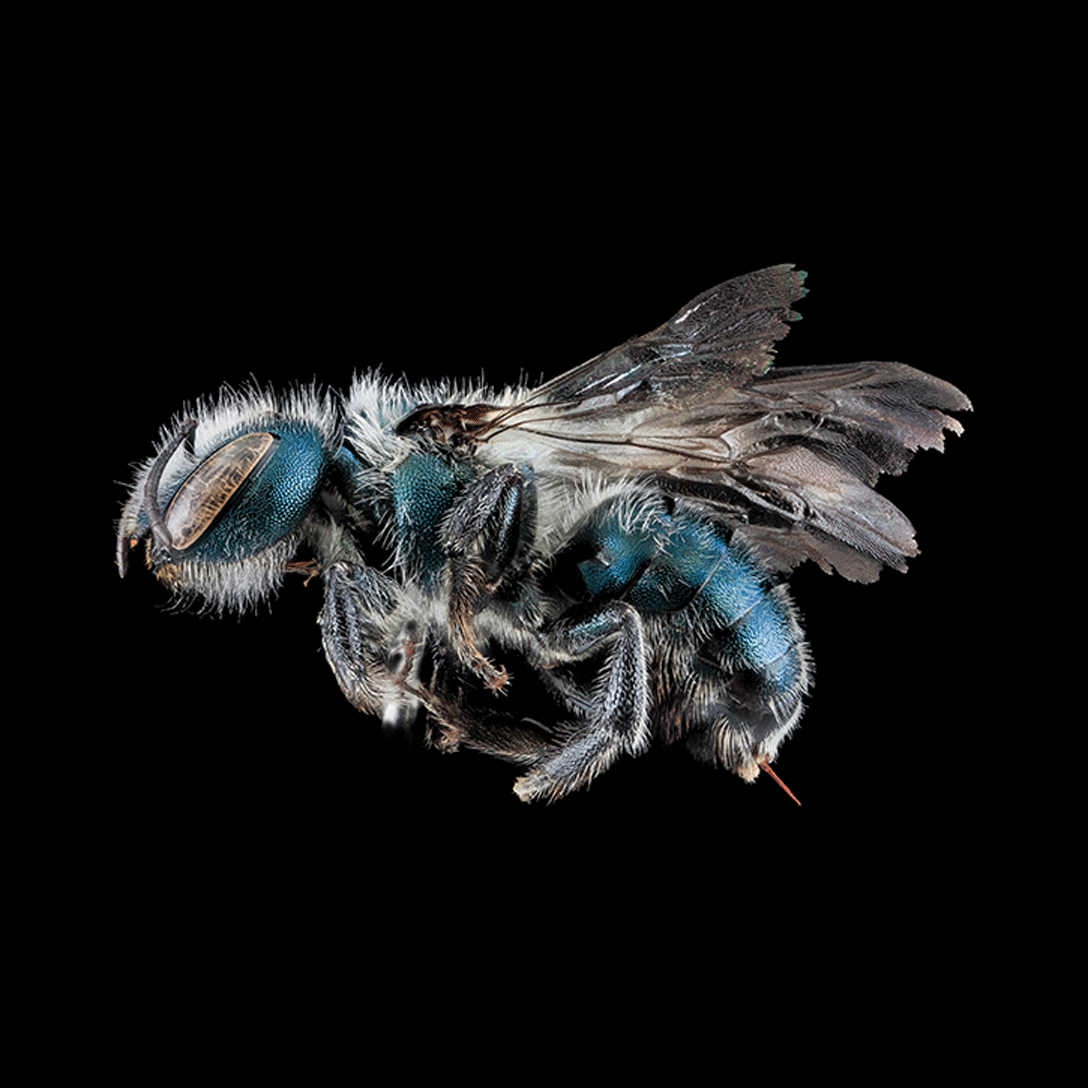
Maine Blueberry Bee (Osmia atriventris), a native bee that is better than honey bees for providing pollination services for blueberries.
Bee Identification and Occurrence Database Tools
Bees are collected using a diverse set of sampling tools, such as traps and nets. Under most circumstances, all bees captured by Bee Lab scientists, including honey bees (Apis mellifera) and other introduced species, are identified. Bee Lab scientists have developed online identification tools to assist in confirmation of bee identification. Additionally, Bee Lab scientists have collaborated with many taxonomic experts to develop these tools, which are hosted by the Bee Lab’s partner, Discover Life (https://www.discoverlife.org). The identification and field collection information are then entered into a database. Bee Lab scientists also document the approach used for the collection (such as, number of trapping hours per trap and hours spent netting). Data are then uploaded and shared publicly via the Global Biodiversity Information Facility at https://www.gbif.org/dataset/f519367d-6b9d-411c-b319-99424741e7de. Distribution maps are available for many species at the Discover Life Global Mapper (https://www.discoverlife.org/mp/20m?act=make_map).
Native Bees and Plants
Native bees are imperiled worldwide (Inouye and others, 2017; Dicks and others, 2021) due to many factors, including changing climate, pesticide application, conversion from native to nonnative plants, and habitat degradation. An estimated 30 percent of the ~4,000 bees native to the United States are pollen specialists (Fowler, 2020a, 2020b; Fowler and Droege, 2020), meaning that they collect pollen from a few related plants or a single plant species. Loss of individual plant species can potentially result in declines or even extinction of specialist bees. Bee Lab scientists study bee-plant interrelations and factors that affect the intricate relations between bees and the plants that they forage on, such as timing of flower availability and influence of climate on native plant communities.
What Can You Do for Native Bee Pollinator Conservation?
Plant flowers! Bees are tiny, one bush or one clump of perennials is often all it takes to foster native bees in your yard. Within about a mile radius of your yard (urban or rural) there are at least 100 species of bees looking for the right plants. Attracting and tending these native bees on your property is all about planting the right flowers and flowering bushes. For a list of flowers and bushes suitable for pollinators in your area, visit https://www.pollinator.org/guides provided by the Pollinator Partnership.
References Cited
Committee on the Status of Pollinators in North America, 2007, Status of Pollinators in North America: Washington D.C., National Academy Press, 312 p., accessed May 6, 2023, at https://nap.nationalacademies.org/read/11761/chapter/1.
Dicks, L.V., Breeze, T.D., Ngo, H.T., Senapathi, D., An, J., Aizen, M.A., Basu, P., Buchori, D., Galetto, L., Garibaldi, L.A., Gemmill-Herren, B., Howlett, B.G., Imperatriz-Fonseca, V.L., Johnson, S.D., Kovács-Hostyánszki, A., Kwon, Y.J., Lattorff, H.M.G., Lungharwo, T., Seymour, C.L., Vanbergen, A.J., and Potts, S.G., 2021, A global-scale expert assessment of drivers and risks associated with pollinator decline: Nature Ecology and Evolution, v. 5, no. 10, p. 1453–1461, accessed April 2023, at https://doi.org/10.1038/s41559-021-01534-9.
Fowler, J., 2020a, Pollen specialist bees of the Western United States: Jarrod Fowler web page, accessed May 18, 2023, at https://jarrodfowler.com/specialist_bees.html.
Fowler, J., 2020b, Pollen specialist bees of the Central United States: Jarrod Fowler web page, accessed May 18, 2023, at https://jarrodfowler.com/specialist_bees.html.
Fowler, J., and Droege, S., 2020, Pollen specialist bees of the Eastern United States: Jarrod Fowler web page, accessed May 18, 2023, at https://jarrodfowler.com/specialist_bees.html.
Inouye, D., Droege, S., and Mawdsley, J., 2017, Words alone will not protect pollinators: Science, v. 355, no. 6323, p. 357–357, accessed May 31, 2023, https://www.science.org/doi/full/10.1126/science.aam6132.
USGS Eastern Ecological Science Center
12100 Beech Forest Road
Laurel, Maryland 20708
Suggested Citation
Droege, S., Irwin, E., Malpass, J., and Mawdsley, J., 2023, The bee lab: U.S. Geological Survey Fact Sheet 2023–3023, 2 p., https://doi.org/10.3133/fs20233023.
ISSN: 2327-6932 (online)
ISSN: 2327-6916 (print)
| Publication type | Report |
|---|---|
| Publication Subtype | USGS Numbered Series |
| Title | The bee lab |
| Series title | Fact Sheet |
| Series number | 2023-3023 |
| DOI | 10.3133/fs20233023 |
| Year Published | 2023 |
| Language | English |
| Publisher | U.S. Geological Survey |
| Publisher location | Reston, VA |
| Contributing office(s) | Cooperative Research Unit Atlanta, Eastern Ecological Science Center |
| Description | 2 p. |
| Online Only (Y/N) | N |
| Additional Online Files (Y/N) | N |
| Google Analytic Metrics | Metrics page |


